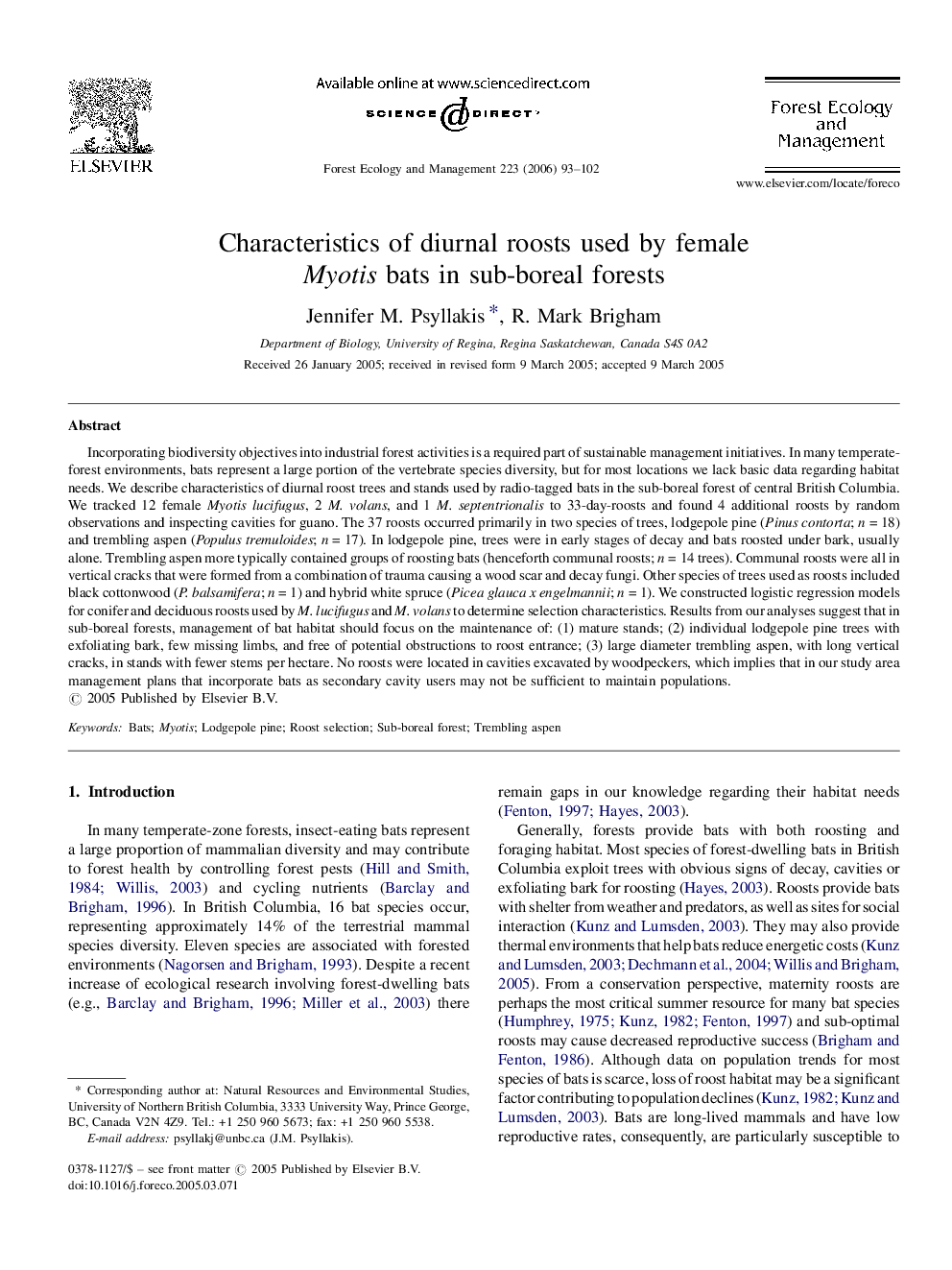| کد مقاله | کد نشریه | سال انتشار | مقاله انگلیسی | نسخه تمام متن |
|---|---|---|---|---|
| 90578 | 159389 | 2006 | 10 صفحه PDF | دانلود رایگان |

Incorporating biodiversity objectives into industrial forest activities is a required part of sustainable management initiatives. In many temperate-forest environments, bats represent a large portion of the vertebrate species diversity, but for most locations we lack basic data regarding habitat needs. We describe characteristics of diurnal roost trees and stands used by radio-tagged bats in the sub-boreal forest of central British Columbia. We tracked 12 female Myotis lucifugus, 2 M. volans, and 1 M. septentrionalis to 33-day-roosts and found 4 additional roosts by random observations and inspecting cavities for guano. The 37 roosts occurred primarily in two species of trees, lodgepole pine (Pinus contorta; n = 18) and trembling aspen (Populus tremuloides; n = 17). In lodgepole pine, trees were in early stages of decay and bats roosted under bark, usually alone. Trembling aspen more typically contained groups of roosting bats (henceforth communal roosts; n = 14 trees). Communal roosts were all in vertical cracks that were formed from a combination of trauma causing a wood scar and decay fungi. Other species of trees used as roosts included black cottonwood (P. balsamifera; n = 1) and hybrid white spruce (Picea glauca x engelmannii; n = 1). We constructed logistic regression models for conifer and deciduous roosts used by M. lucifugus and M. volans to determine selection characteristics. Results from our analyses suggest that in sub-boreal forests, management of bat habitat should focus on the maintenance of: (1) mature stands; (2) individual lodgepole pine trees with exfoliating bark, few missing limbs, and free of potential obstructions to roost entrance; (3) large diameter trembling aspen, with long vertical cracks, in stands with fewer stems per hectare. No roosts were located in cavities excavated by woodpeckers, which implies that in our study area management plans that incorporate bats as secondary cavity users may not be sufficient to maintain populations.
Journal: Forest Ecology and Management - Volume 223, Issues 1–3, 1 March 2006, Pages 93–102